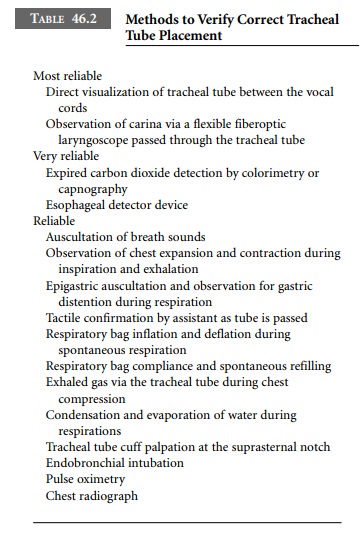Chapter: Clinical Cases in Anesthesia : The Difficult Airway
How is successful tracheal intubation verified?
How is successful tracheal intubation verified?
The most reliable method of confirming
successful tracheal intubation is by direct laryngoscopy with a traditional
rigid laryngoscope and visualizing the tracheal tube between the vocal cords.
External posterior displacement of the larynx may improve the view.
Alternatively, a FFL can be advanced through the endotracheal tube and tracheal
rings and carina identified. Two other methods of confirmation, expired carbon
dioxide detection and esophageal indicator bulb inflation, are slightly less
reli-able. Expired carbon dioxide detection can be quantitative or qualitative.
These methods frequently provide digital readouts, wave forms, or colorimetric
indicators. Alter-natively, the esophageal indicator bulb attached to an
in-dwelling tracheal tube will expand rapidly if the tube is located in the
trachea. When positioned in the esophagus, it will generally fail to inflate or
expand slowly. Tertiary methods of verifying tracheal tube placement are less
reli-able than those mentioned above and are listed in Table 46.2.

Related Topics